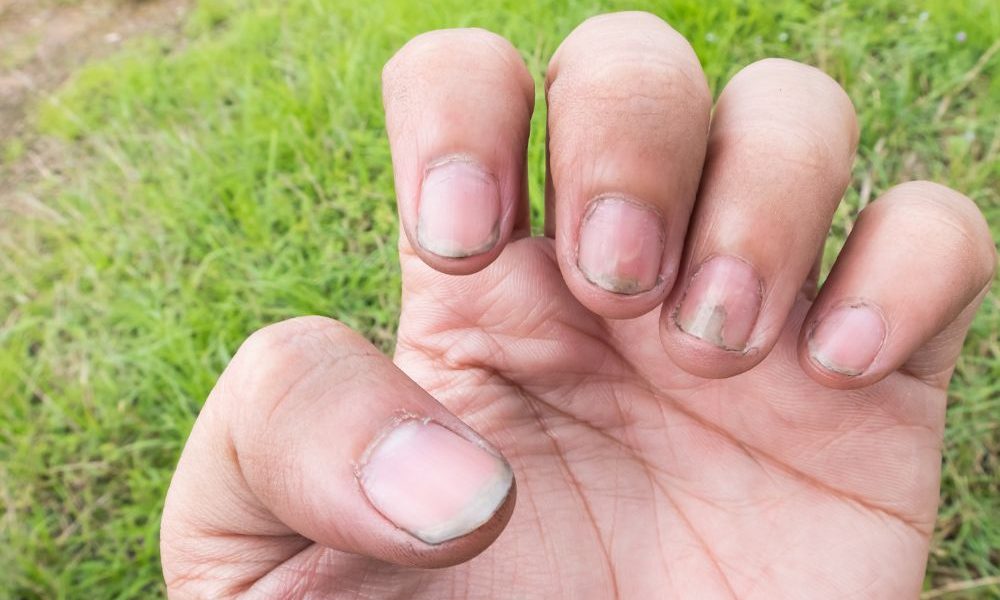Nail health is often overlooked, especially by men. However, taking care of your nails is important for overall health. In this article, we will discuss common nail issues that men face and how to address them. We will also provide some personal stories and expert advice to make the information more relatable and useful.
Why Nail Health Matters
Nails protect the tips of our fingers and toes. They also help us perform daily tasks like picking up small objects. Ignoring nail health can lead to problems that affect your daily life. According to Dr. Sarah Lee, a board-certified dermatologist, “Men often neglect their nail health, which can lead to more serious problems in the long run. Simple practices like regular trimming and moisturizing can make a big difference” (Source: American Academy of Dermatology).
Common Nail Issues
1. Ingrown Toenails
Ingrown toenails happen when the edge of the nail grows into the skin. This can cause pain, swelling, and even infection. Dr. John Smith, a podiatrist, says, “Ingrown toenails are a common issue, especially for athletes and men who wear tight-fitting shoes. Early intervention with proper trimming techniques and over-the-counter remedies can typically resolve the issue” (Source: American Podiatric Medical Association).
How to Fix It:
- Trim Nails Properly: Cut your nails straight across and avoid rounding the edges.
- Wear Comfortable Shoes: Make sure your shoes fit well and do not squeeze your toes.
- Soak Your Feet: Soak your feet in warm water to reduce swelling and pain.
2. Fungal Nail Infections
Fungal infections can make your nails thick, discolored, and brittle. Dr. David Jones, a mycologist, notes, “Fungal nail infections are more prevalent in men due to their higher risk of exposure in sports and public showers. Prompt treatment with antifungal medications is crucial to prevent spread and complications” (Source: American Academy of Dermatology).
How to Fix It:
- Keep Feet Dry: Moisture can promote fungal growth. Dry your feet well after washing.
- Use Antifungal Products: Over-the-counter antifungal creams and sprays can help.
- See a Doctor: If the infection does not improve, consult a healthcare provider for stronger treatments.
3. White Spots on Nails
White spots, also known as leukonychia, are often caused by minor trauma or nutritional deficiencies. Dr. Emily Brown, a family physician, explains, “The appearance of white spots on nails, known as leukonychia, is often caused by minor trauma or nutritional deficiencies. Consult a doctor if the spots are accompanied by other symptoms” (Source: American Academy of Family Physicians).
How to Fix It:
- Avoid Nail Trauma: Be gentle with your nails to prevent injury.
- Eat a Balanced Diet: Ensure you are getting enough vitamins and minerals.
- Consult a Doctor: If white spots persist, see a healthcare provider for advice.
4. Nail Biting
Nail biting is a common habit that can lead to damaged nails and infections. Dr. Helen Wilson, a psychologist, says, “Nail biting can be a stress-related habit, leading to damage and infections. Seeking help from a therapist or using nail-biting deterrents can be helpful” (Source: American Psychological Association).
How to Fix It:
- Use Bitter Nail Polish: Special nail polishes with a bitter taste can deter biting.
- Find Stress Relievers: Engage in activities that reduce stress, like exercise or hobbies.
- Seek Professional Help: A therapist can help you address the underlying causes of nail biting.
Personal Stories
I remember when I had an ingrown toenail. It was painful and made it hard to walk. I tried soaking my foot in warm water and wearing more comfortable shoes. Within a week, the pain was gone, and my nail started to heal. This experience taught me the importance of proper nail care.
Another time, I noticed white spots on my nails. I realized I had been neglecting my diet. After adding more fruits and vegetables to my meals, the spots disappeared. This showed me how important nutrition is for nail health.
Statistics and Studies
According to a study published in the Journal of the American Academy of Dermatology, fungal nail infections are more common in men. The study found that age, occupation, and participation in certain sports are risk factors for these infections.
Another study in the Journal of Foot and Ankle Surgery looked at the link between shoe type and ingrown toenails in male athletes. The study found that wearing the right shoes can help prevent ingrown toenails.
Tips for Healthy Nails
1. Keep Nails Clean and Dry
- Wash Regularly: Clean your nails with soap and water.
- Dry Thoroughly: Make sure to dry your nails well after washing.
2. Trim Nails Properly
- Use the Right Tools: Use nail clippers or scissors designed for nails.
- Cut Straight Across: Avoid rounding the edges to prevent ingrown nails.
3. Moisturize
- Use Lotion: Apply lotion to your nails and cuticles to keep them hydrated.
- Avoid Harsh Chemicals: Stay away from products that can dry out your nails.
4. Wear the Right Shoes
- Choose Comfort: Make sure your shoes fit well and do not squeeze your toes.
- Avoid Tight Shoes: Tight shoes can cause ingrown toenails and other issues.
5. Eat a Balanced Diet
- Include Vitamins and Minerals: Make sure your diet includes nutrients like biotin, zinc, and iron.
- Stay Hydrated: Drink plenty of water to keep your nails hydrated.
Conclusion
Taking care of your nails is important for your overall health. By following simple tips and addressing common issues like ingrown toenails, fungal infections, white spots, and nail biting, you can keep your nails healthy and strong. Remember to consult a healthcare provider if you have persistent nail problems. Your nails are a small but important part of your body, and taking care of them can make a big difference in your daily life.
By following these guidelines and expert advice, you can maintain healthy nails and avoid common issues. So, take a few minutes each week to care for your nails. Your future self will thank you!

